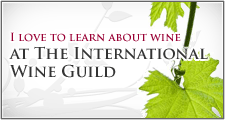Entire libraries can be filled with books that speak of the art and science of wine growing. You are not alone if you view its discussion as academic, prosaic, and, well, pretty unhelpful, especially when it comes to choosing a good wine from a list at a restaurant or finding the style you want at a wine merchant. This discussion is going to be entirely different.
Thanks to the innovative observations of new-style sommeliers like Andrea Immer, there is an excellent and easy way to understand how wine growing and the label terms that are associated with it can tell you volumes about a bottle of wine.
Back to the basics:
First, it's important to understand some wine growing (viticulture) basics. We will discuss how the following knowledge can be easily translated into certain labeling terms that will help you anticipate a wine's style and flavor.
While it may be incongruous, bad soil actually makes good wine. The reason for this is that poor soil is low in the organic and mineral content that will allow the vine to thrive. As a result, the vine will direct nearly all of its resources toward ripening the fruit, rather than causing a proliferation of green in the leaves and shoots.
Similarly, vines should work for their water. The reasoning is the same: the vine will direct all of its resources toward ripening of the fruit.
A lower yield from each vine is associated with higher quality. This is because vine management methods such as pest control, weed control and pruning (which are all under the authority of a skilled and astute wine maker) should sift out underdeveloped or poor fruit. The lower the yield, the reasoning goes, the more the wine grower has emphasized quality control in their management methods. A natural exception would be an extremely poor growing season, in which mother nature caused a short growing season or a freeze off from which only a few quality vines could be salvaged.
Old World and New World Growing Styles
The first and most striking observation we can make about how wine growing affects style and flavor is that there are basically two schools of thought on the subject: how the old world views the process, and how the new world views it. The old world is largely defined as the European continent including wine stalwarts France, Italy and Spain, as well as smaller central and eastern European producers. The new world includes the United States, South America, Australia and New Zealand.
The difference between the two can be summed up succinctly:
- The Old World growing style imparts more subtle flavors and qualities
- The New World growing style imparts bolder flavors and qualities
The old world places a heightened emphasis on the land imparting that distinct quality to a wine. This is also known as terrior. The vineyard itself is sacred ground as the subtleties of its soil, climate and geography impart complex and often unexpected flavors and scents to a wine. Often these wines are described as more earthy, that is, having more of an organic component to them.
In contrast, new world wines are often created by mixing and matching grapes from different vineyards (even as they stick to one grape style like Merlot, Cabernet Sauvignon, Syrah etc), relying on a new science of wine growing and wine making that sprung out of California's U.C. Davis in the 1950's to impart bolder flavors and scents.
Blind tastings can be intimidating for anyone who is just beginning to explore the wonderful world of wine, as professionals from all over the world can hone in on a specific wine's grape type, country and even specific vineyard just with a swirl, a sniff and a taste. But it becomes easier to understand when you know the first question they ask themselves is: "Is this a more subtle, old world wine, or a bolder, new world wine?"
Once you know the answer to that question, you are well on your way to understanding exactly what you are tasting!






